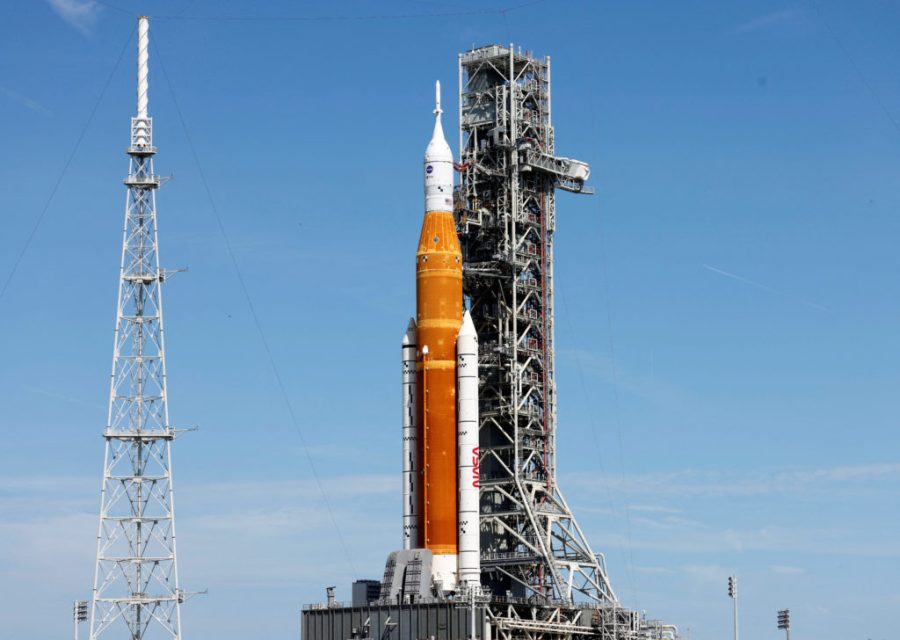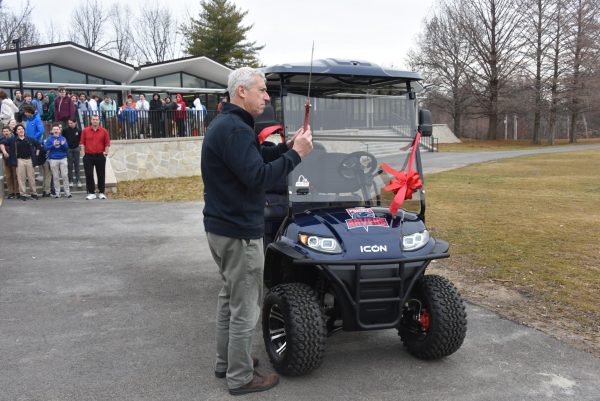The Revolutionary Rocket
NASA’s next-generation moon rocket, the Space Launch System (SLS), with the Orion crew capsule perched on top, stands on launch complex 39B before its rescheduled debut test launch for the Artemis 1 mission, at Cape Canaveral, Florida, U.S. September 1, 2022. REUTERS/Joe Skipper
September 16, 2022
On July 20, 1969, Neil Armstrong and his crew were the first humans to walk on the Moon. Now, almost half a century later, humans will land on the moon again.
NASA once more has picked up the goal of traveling to the moon, except this time they want to send humans there so that eventually people will live on the moon and have a working economy there. The Artemis Program has three stages – it is called the Artemis Program because Artemis was the twin sister to Apollo in Greek mythology. Currently, we are at the height of the first stage, or so we thought. NASA has attempted to launch the Artemis I rocket twice at this point but problems with the fuel and sensors have since delayed the launch until at least late September or early October.
Now why has it been over 50 years since NASA or anyone else has landed humans on the moon? Unfortunately, it has solely been a financial and political problem, nothing to do with scientific or technological obstacles. NASA has had plans to go to the moon for a little while now but none of those plans came to fruition. However, now there is a whole plan set in place to make a working civilization on the moon.
Artemis I is vital for the success of this plan because it is the only practice scientists have before they send actual humans aboard the spacecraft. Artemis I will be equipped with scientific technology in order to expand lunar knowledge and to learn more about deep-space radiation. Additionally, Campos, which is a mannequin that will be wearing an exact replica of the space suit that the astronauts will wear when Artemis II launches, will have numerous sensors placed all over it in order to understand what flight for a human will feel like and if it will be safe for them. Artemis I will orbit only 100 kilometers above the moon before it continues its journey around 64,373 kilometers past the moon. Then it will return for a total duration of 42 days.
There are four parts to the program. The first is the Orion module, which will be the rocket that carries humans to the moon. A lunar gateway, which is basically a small station orbiting the moon, will serve as a docking point for missions to the moon and beyond. A moon landing module will take astronauts and cargo from the lunar gateway to the Moon’s surface. NASA is currently trying to develop a HLS, which is a human landing system, in order to take astronauts to the Moon. But none of this would be possible without the Space Launch System (SLS), the final and most important piece to the puzzle. The SLS will be responsible for bringing the Orion module outside of Earth’s atmosphere. It is currently estimated that the beginning launches will cost over $800 million.
Currently, NASA is only focusing on the three Artemis stages but sky’s the limit with how many there will be. Artemis II will bring humans the furthest in space than they have ever gone before. The rocket is set to make a figure 8 shape with the Earth and the moon, flying as far as 7402 kilometers past the far side of the moon. Artemis III will be the first moon landing since Apollo 17’s landing in 1972. Four astronauts will be aboard the rocket and will dock at the lunar gateway. Then two of them will board a lunar landing module and spend a week on the moon doing various tests. With the introduction of NASA’s Artemis Program, who knows, maybe your grandkids will have the option to live on Mars.










